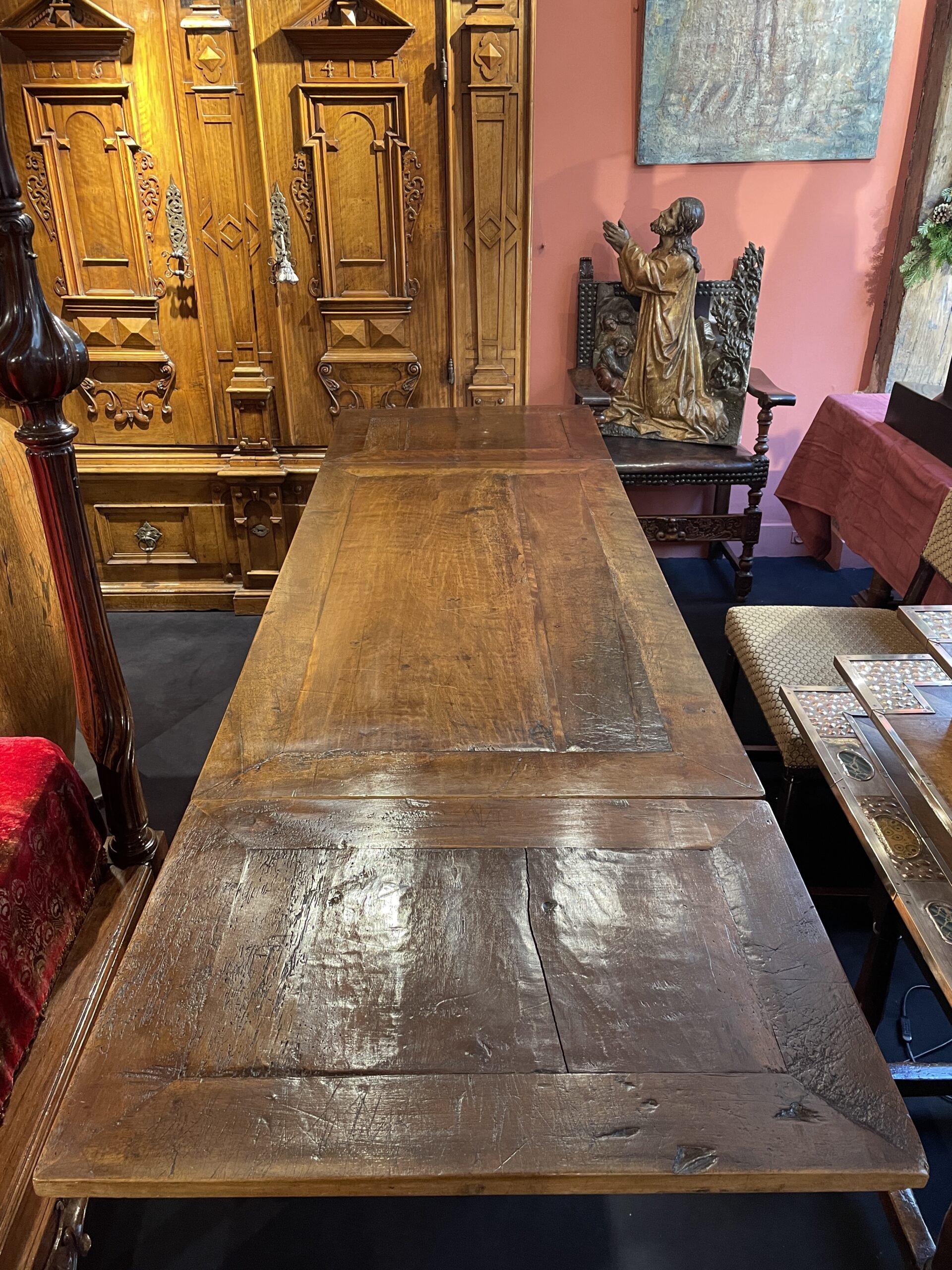Description
This beautiful model of a table in light walnut from the Second French Renaissance has at each end of its tabletop, a set of drawers and extensions known as “à l’italienne.”
Rectangular, it has the advantage of expanding by practically doubling its surface. This system consists of a tabletop, movable along a vertical axis, under which slide two panels, each mounted on two oblique-cut slides. By pulling the panels towards oneself, the slides lift the tabletop to provide passage to the extensions, which then become level with the tabletop when it is lowered back in place.
The assembly of the tabletop, with lateral joints, is characteristic of its time. Four pendant spindles traditionally adorn the corners.
The base of this table consists of two supports joined by a spacer, from which three delicately turned shafts rise towards the center of the tabletop, each with a spindle-shaped capital, connected by semi-circular arcades, preventing the tabletop from warping.
The apron rests at each end on two supports with slightly larger gables than those of the central columns; they are joined by a curved arch, adorned with vegetation and scrolls. The four corners of the spacer are decorated with finely carved ram’s heads.
This table is part of a model similar to those created and published by Androuet du Cerceau in the mid-16th century to design furniture. It belongs to the stylistic movement that emerged in Île-de-France and the Loire Valley at that time, where the composition is of “classic” inspiration, always harmonious and sober in reaction to the prevailing ultramontane style in other regions.
Bibliography :
BOCCADOR Jacqueline, Le mobilier français du Moyen-âge à la Renaissance, Ed. Monelle Ayot.
DE REUNIER Nicole, Le mobilier domestique, CNMH.









